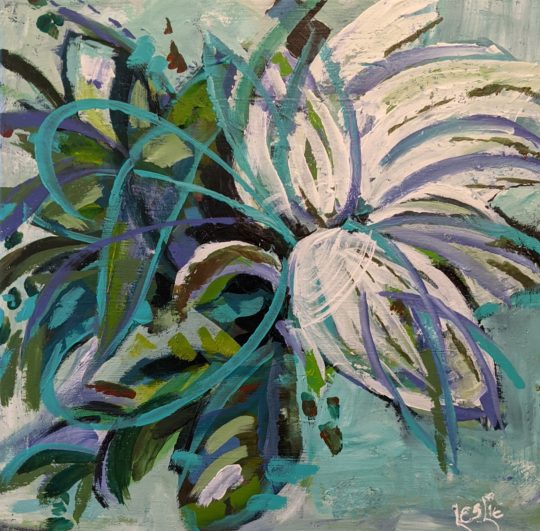
I have a confession to make… after many years as a representational painter, I’ve fallen in love with abstract art.
I know there are people who don’t get abstracts at all – I used to be one of them. There are those who think abstract art is the refuge of would-be artists who don’t have any talent or know what they’re doing. But the fact is, consistently doing great abstracts requires a surprising amount of skill, creativity, and effective use of the main principles of art, whether the artist is using them consciously or instinctively.
When I paint representationally, nine times out of ten I use reference photos. I have a clear idea of where I am going because that image is right in front of me. The reference is the roadmap for the painting, although it’s always my prerogative to go as far off road as I like.
I believe in using reference photos (or painting from life, if possible) because those two methods are the ultimate skill-builders for the representational artist. They are the modern-day equivalents of copying paintings of the Masters, which is how artists trained for generations.
Of course, in the days of the Old Masters, abstract art did not even exist. So that begs the question, if you want to do non-objective art, is this type of skill-building useless? Do you need any of the skills you learned painting from references?
When I do an abstract, I don’t know where the painting is going or what it will look like when it gets there. I have no roadmap. Sometimes I don’t know how to proceed once I start or how to know when the piece is done. I’m up on the high-wire without a net.
All I can do is keep going until it gets to a point where I think, “Oh, wow, I love it!” And the skills I’ve honed from years of representational painting are the very ones I need to get me to that point.
Occasionally, an abstract piece falls together so quickly it’s like magic! Most times, though, getting to that “I love it” point takes all the knowledge learned from years of representational painting. It takes everything I’ve absorbed and internalized about composition, value, shape, color, rhythm, and balance. It takes every bit of my focus and discernment. It takes trusting that all the necessary skill and creativity is inside me and that it will come through on the canvas.
That’s what makes abstract work so exhilarating, so liberating, and so scary!
My abstract work is already changing the way I approach my representational work. Perhaps at some point, both genres will merge in a unique, as yet unknown style.
On that exciting note, I’m off to the easel. Hope you are too.